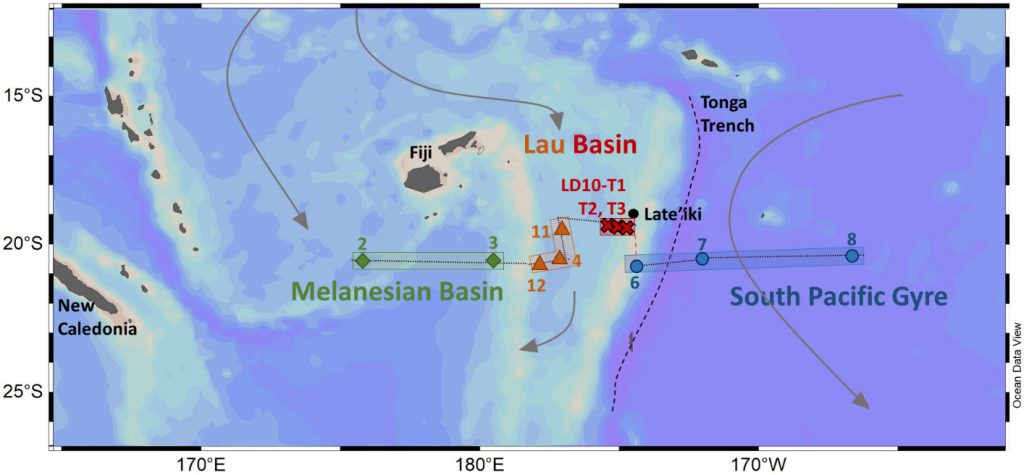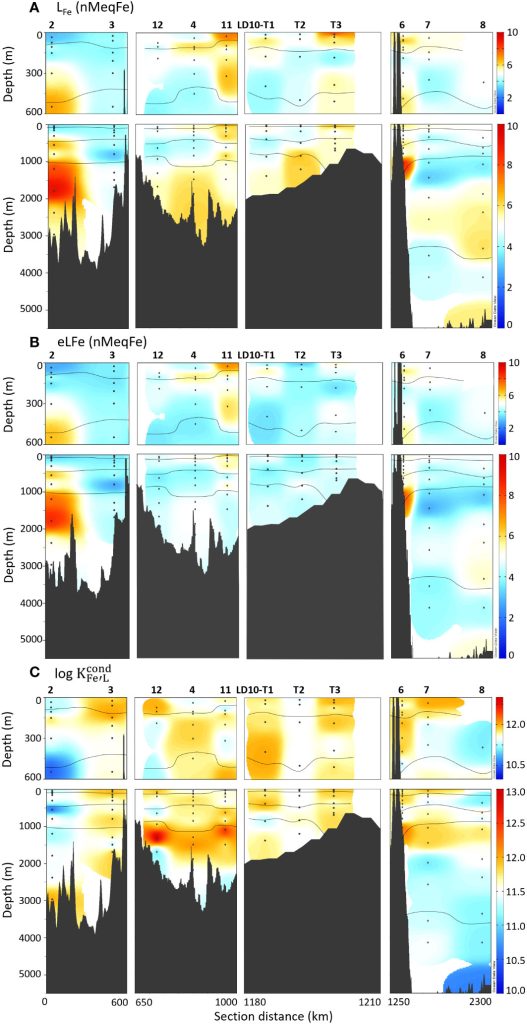A detailed investigation of iron complexation by organic ligands in the Western Tropical South Pacific Ocean
Léo Mahieu and his co-workers (2024, see reference below) present the conditional concentration (LFe) and binding-strength (log K) of iron-binding ligands in the Western Tropical South Pacific Ocean during the GEOTRACES TONGA cruise (GPpr14). Based on the analysis of 103 samples, they found a high mean LFe of 5.2 ± 1.2 nMeqFe, predominantly consisting of intermediate strength L2 ligands (84%; mean log K of 11.6 ± 0.4), consistent with complexation by humic-like substances. However, only 30% of dissolved iron (DFe) in these samples is within humic complexes and ligands were in great excess of DFe in the mixed layer as in deep waters, suggesting poor stabilization of DFe inputs in this area.
The authors interpret that high LFe (up to 9 nMeqFe) in samples close to hydrothermal sites could be due to detoxification strategies from plankton communities toward hydrothermally-fueled toxic trace metals other than Fe. In addition, competition between Fe and competing metals for ligand binding sites could favor DFe oxidation and precipitation near hydrothermal vents and explain the absence of strong Fe stabilization.



Reference:
Mahieu, L., Whitby, H., Dulaquais, G., Tilliette, C., Guigue, C., Tedetti, M., Lefevre, D., Fourrier, P., Bressac, M., Sarthou, G., Bonnet, S., Guieu, C., & Salaün, P. (2024). Iron-binding by dissolved organic matter in the Western Tropical South Pacific Ocean (GEOTRACES TONGA cruise GPpr14). Frontiers in Marine Science, 11. Access the paper: 10.3389/fmars.2024.1304118
